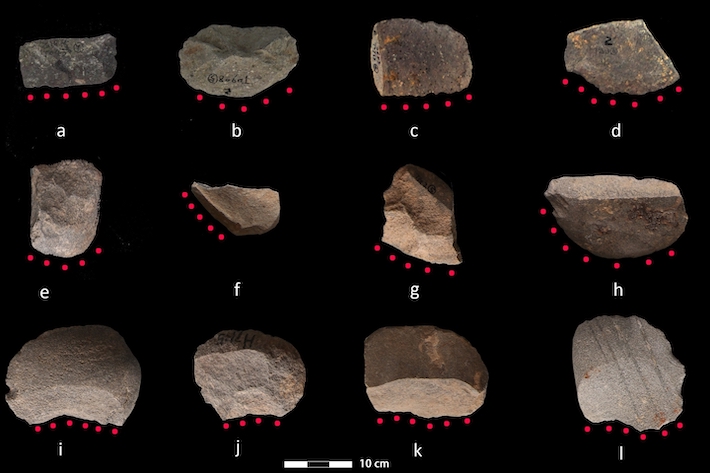 DARTMOUTH, NEW HAMPSHIRE—According to a statement released by Dartmouth College, evidence of rice harvesting has been detected on 10,000-year-old stone tools unearthed at Neolithic sites in southern China’s Lower Yangtze River Valley. Unlike wild rice, cultivated rice seeds stay on the plant as they mature. Domestication of rice as a crop is thought to have occurred as early farmers selected plants with more seeds on them over time. Jiajing Wang and his colleagues examined 52 small, flaked stone tools and looked for residues of phytoliths, which are microscopic structures made of silica found in some plant tissues, including rice. They found rice phytoliths on 28 of the tools. They also used microscopes to analyze scratches on the surfaces of the tools, and found 30 tools with fine marks, high polish, and rounded edges likely produced by harvesting silica-rich plants. Further analysis shows that older tools were used in a method called finger-knife harvesting, in which the rice is harvested from the top of the plant. The marks found on later tools indicate that a slicing motion had been used, likely in the sickle harvesting method. “Sickle harvesting was more widely used when rice became more domesticated, and more ripe seeds stayed on the plant,” Wang explained. The rice leaves and stems could also be put to use, he added. Read the original scholarly article about this research in PLOS ONE. To read about large-scale rice farming in the Yangtze Delta beginning about 5,000 years ago, go to "Early Signs of Empire."
DARTMOUTH, NEW HAMPSHIRE—According to a statement released by Dartmouth College, evidence of rice harvesting has been detected on 10,000-year-old stone tools unearthed at Neolithic sites in southern China’s Lower Yangtze River Valley. Unlike wild rice, cultivated rice seeds stay on the plant as they mature. Domestication of rice as a crop is thought to have occurred as early farmers selected plants with more seeds on them over time. Jiajing Wang and his colleagues examined 52 small, flaked stone tools and looked for residues of phytoliths, which are microscopic structures made of silica found in some plant tissues, including rice. They found rice phytoliths on 28 of the tools. They also used microscopes to analyze scratches on the surfaces of the tools, and found 30 tools with fine marks, high polish, and rounded edges likely produced by harvesting silica-rich plants. Further analysis shows that older tools were used in a method called finger-knife harvesting, in which the rice is harvested from the top of the plant. The marks found on later tools indicate that a slicing motion had been used, likely in the sickle harvesting method. “Sickle harvesting was more widely used when rice became more domesticated, and more ripe seeds stayed on the plant,” Wang explained. The rice leaves and stems could also be put to use, he added. Read the original scholarly article about this research in PLOS ONE. To read about large-scale rice farming in the Yangtze Delta beginning about 5,000 years ago, go to "Early Signs of Empire."
Stone Tools Offer Clues to Rice Domestication in China
